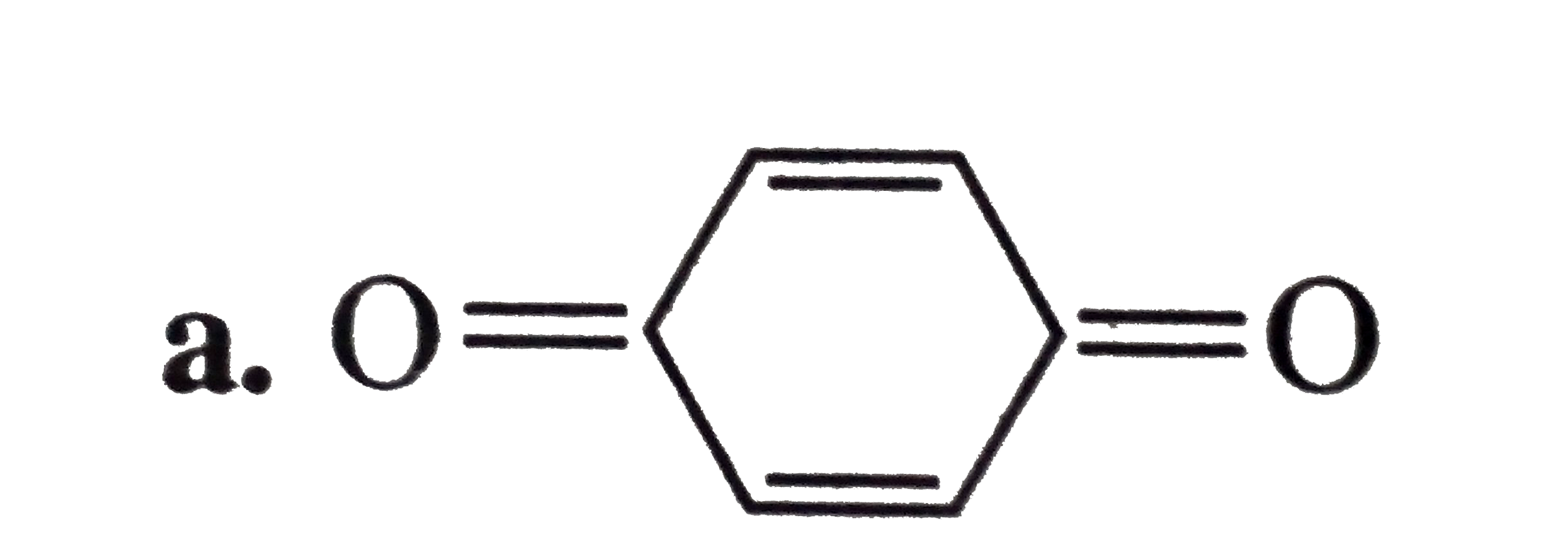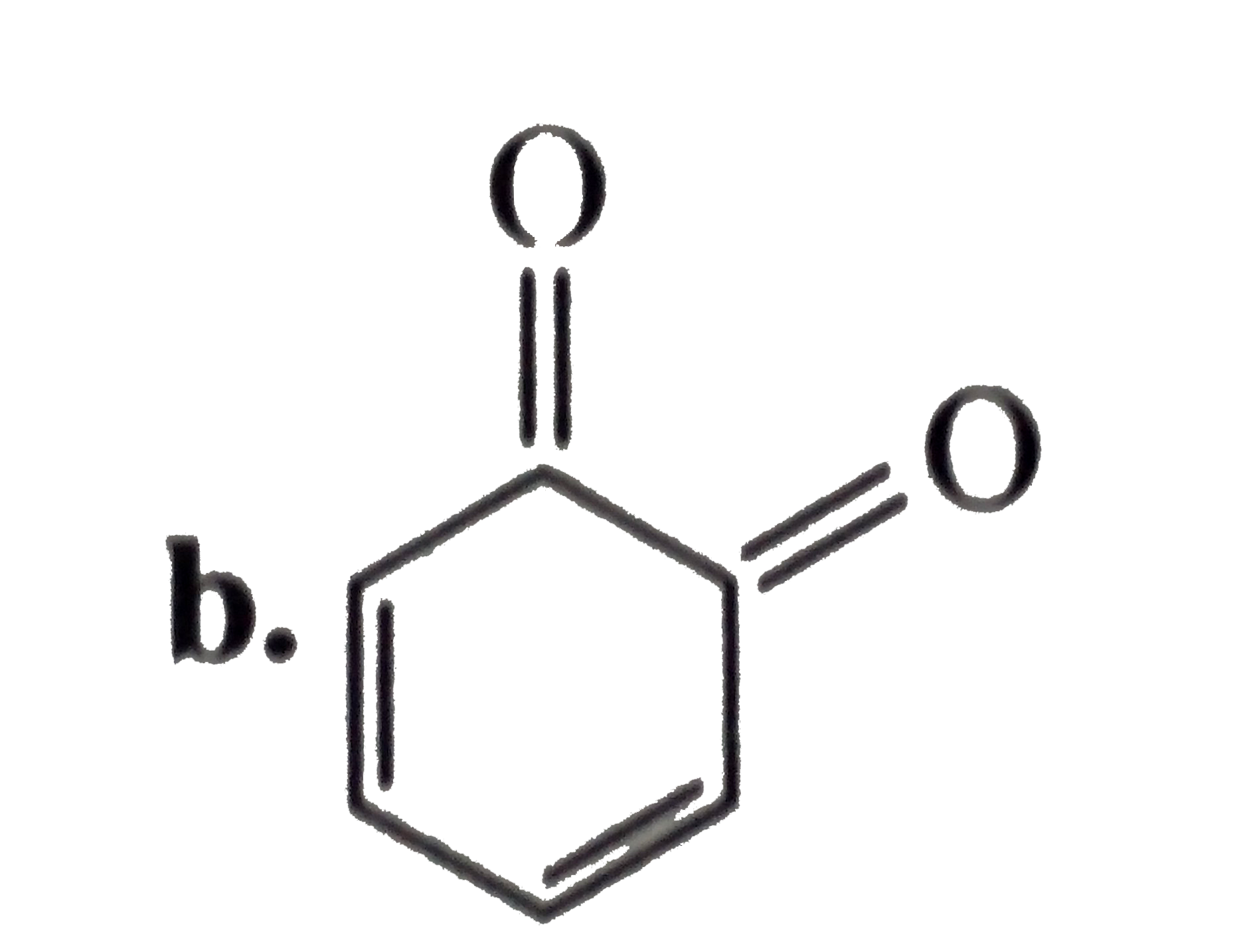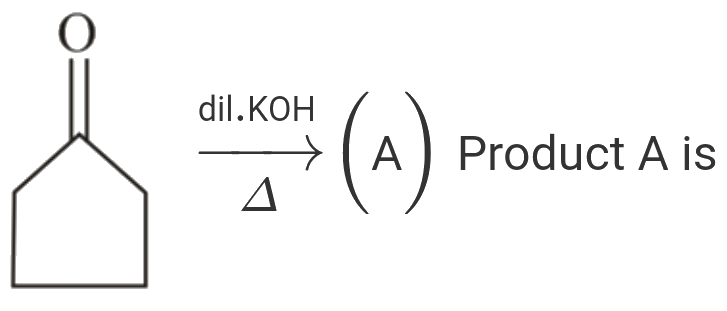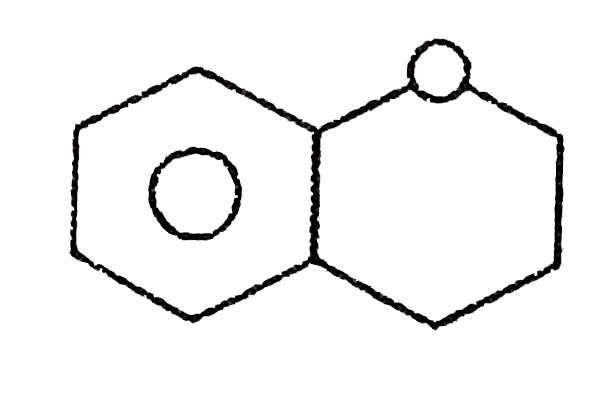Phenol Aerial−−−→⊗id coloured. This is due to the formation of:



All
The correct Answer is:C
To solve the question regarding the coloration of phenol upon aerial oxidation, we can follow these steps:
1. Understanding Aerial Oxidation:
- Aerial oxidation refers to the oxidation of phenol when it is exposed to air (oxygen). This process can lead to the formation of various oxidized products.
2. Identifying the Products:
- When phenol undergoes aerial oxidation, it can form two significant compounds:
- Phenolquinone
- Para-Benzoquinone
- These compounds are formed due to the oxidation of the hydroxyl group (-OH) present in phenol.
3. Color Formation:
- The colored nature of the products is due to the presence of conjugated systems in the molecular structure of the oxidized compounds.
- The formation of Phenolquinone and Para-Benzoquinone introduces double bonds and resonance structures, which can absorb visible light, leading to the appearance of color.
4. Color Characteristics:
- The colors observed can vary from pink to red to brown, depending on the concentration and the specific conditions of the oxidation process.
- These colors arise from the electronic transitions within the conjugated systems of the oxidized compounds.
5. Conclusion:
- Therefore, the coloration observed in phenol after aerial oxidation is due to the formation of Phenolquinone and Para-Benzoquinone, which possess conjugated systems that absorb light in the visible spectrum.
Final Answer:
Phenol upon aerial oxidation gives colored compounds due to the formation of Phenolquinone and Para-Benzoquinone.
- Aerial oxidation refers to the oxidation of phenol when it is exposed to air (oxygen). This process can lead to the formation of various oxidized products.
- When phenol undergoes aerial oxidation, it can form two significant compounds:
- Phenolquinone
- Para-Benzoquinone
- These compounds are formed due to the oxidation of the hydroxyl group (-OH) present in phenol.
- The colored nature of the products is due to the presence of conjugated systems in the molecular structure of the oxidized compounds.
- The formation of Phenolquinone and Para-Benzoquinone introduces double bonds and resonance structures, which can absorb visible light, leading to the appearance of color.
- The colors observed can vary from pink to red to brown, depending on the concentration and the specific conditions of the oxidation process.
- These colors arise from the electronic transitions within the conjugated systems of the oxidized compounds.
- Therefore, the coloration observed in phenol after aerial oxidation is due to the formation of Phenolquinone and Para-Benzoquinone, which possess conjugated systems that absorb light in the visible spectrum.
Phenol upon aerial oxidation gives colored compounds due to the formation of Phenolquinone and Para-Benzoquinone.
Topper's Solved these Questions
- BOOK - CENGAGE CHEMISTRY ENGLISHCHAPTER - ALCOHOL,PHENOL AND ETHERSEXERCISE - Exercises Assertion-Reasoning5videos
ALCOHOL,PHENOL AND ETHERS
- BOOK - CENGAGE CHEMISTRY ENGLISHCHAPTER - ALCOHOL,PHENOL AND ETHERSEXERCISE - Archives Single Correct14videos
ALCOHOL,PHENOL AND ETHERS
- BOOK - CENGAGE CHEMISTRY ENGLISHCHAPTER - ALCOHOL,PHENOL AND ETHERSEXERCISE - Exercises Multiple Correct24videos
ALCOHOL,PHENOL AND ETHERS
- BOOK - CENGAGE CHEMISTRY ENGLISHCHAPTER - ALIPHATIC AND AROMATIC ALDEHYDES AND KETONESEXERCISE - Archives Subjective26videos
ALIPHATIC AND AROMATIC ALDEHYDES AND KETONES
Similar Questions
Knowledge Check
- Question 1 - Select One
CH3−CH3∣C∣OH−CH3Na2Cr2O7−−−−−→cool (P) , product (P) in the reaction is :
ACH3−CH3∣C=CH2BCH3−CH3∣CH−CH3CCH3−CH3∣C∣CH3−O−CH3∣C∣CH3−CH3DNo reaction

The deep green colour of compound (C ) is due to the formation of:View Solutionsucrosehydrolysis−−−−−→A+Bseliwanoff−−−−−−→rea≥nt
which color is obtained after above reaction?View SolutionColour of the bead in borax bead testis mainly due to the formation of
View SolutionPhenol on standing in air develops a red colour due to formation of :
View SolutionEthyl ester MeMgBr−−−−−→excessP. The product P will be :
View Solution dil.KOH−−−−→Δ(A) Product A is View Solution
dil.KOH−−−−→Δ(A) Product A is View SolutionPh−Me∣C∣H−OHSOCl2−−−−−→inC5H5N, Which statement is true for the above reaction?
View Solution



